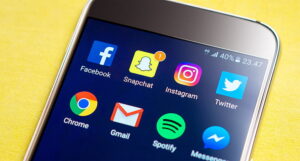Influencer marketing has emerged as one of the most efficient yet effective ways of marketing and promoting a brand. Influencer marketing primarily targets the audience available online on social media.
The reach social media is offering these days has taken thousands of brands to new marketing heights. Brands that miss out on influencer marketing miss a lot of promotion and upliftment of their brand to a unique set of audiences available on social media.
Influencer marketing is only possible when you perform proper and in-depth research of the market presence online. With this research and planning, you can conquer a large audience from social media platforms through influencer marketing.
Let us go a bit deep and know more about influencer marketing in-depth.
What is Influencer Marketing?
In simple words, an influencer is a person who can influence a set of people into doing something, buying something, or liking something. When the concept is about influencer marketing, the influencer collaborates or partners with a particular brand to uplift and promote their product on specific platforms like the social media platform.
The core idea of influencer marketing was derived from celebrity endorsements or celebrity marketing, where celebrities partnered with brands to promote their product to their fan base. Similarly, influencers promote a particular brand among their respective following base.
Since the world is driven by social media these days, the following base on social media for a particular influencer offers much more value.
Hence social content creators have a fixed platform for promoting a brand they partnered with. These social influencers consist of a group of followers exclusive to that particular influencer. Hence the brand promotion concept spreads to a vast audience.
The borderline is a social media influencer, or a social content creator is a person who influences many people through their social media accounts.
When a brand hires a social media influencer, they promote the brand and its subsequent product or service on their social media accounts, thus spreading the word about it. This is known as influencer marketing.
Social Media Influencers
A social media influencer is a person who has established a credible identity on one or more social media platforms.
Social media influencers usually have a dedicated following base and access to a vast and organic audience who influencers can ask to do specific tasks based on trust and their recommendations.
Millions of brands worldwide have taken up this method of using social media influencers to promote their products or services. The market of influencer marketing is fast-moving.
Brands that can keep up with this pace and devise good ideas to channelize growth through social media are benefiting entirely. Influencer marketing also happens to be cheaper and quicker than other forms of marketing.
Types of Social Media Influencers
When social media influencers are classified, you will see that celebrities are not alone. Even ordinary people who have a considerable following based on multiple social media platforms can also be social media influencers.
In hindsight, many brands target small influencers since they happen to be more effective in some instances. A study showed that an influencer who has around 15,000 followers on average across different social media platforms is more effective in most cases compared to influencers who have a million followers since they have a more compact and supportive follower base.
When brands hire such influencers, they come at affordable rates as well.
Keeping the common belief aside, let us look at the different categories of social media influencers. These categories are made strictly based on the number of followers they have.
Although there is no mandatory number of followers needed to fall in a class, these show the rough classifications.
Nano Influencers
A nano influencer is a social media influencer with 10,000 or fewer followers. The number of followers is average across various social media platforms.
For example:
The nano-influencer Reannoin Jean Celins regularly posts photos of fashion and lifestyle for her followers.

She has an online presence that is strikingly similar to Vanessa’s, as both reside in Philadelphia, have a little over 7,000+ followers, and target a younger female audience.
Celins posted one sponsored post—it’s a lighthearted post with some effective personal input (#sippingisbelieving, #phillyrunsondunkin) while remaining consistent with the brand’s message.
A very impressive engagement rate of 9.9% for Celins was generated by 291 likes and 24 comments.
Micro-Influencers
Micro-influencers are those influencers who have a follower base of around 10,000 to 100,000 followers. Again, these numbers are an average of the total following across different social media platforms.
For example:
DSW is a small discount shoe brand with a big dream to become as glamorous and fabulous as the best shoe brands on the market.
Consequently, the retailer tapped into the influence of content creators instead of traditional marketing.
Shoes are not the only thing that matters. To win, DSW elevated the fascination with footwear with the universal need for travel. Influencers active primarily on Instagram’s adventurous side were recruited to represent the brand.
DSW partnered with big accounts complementary to its industry to find new prospects for its business. According to DSW, the 17.2% increase in revenue was a sign of influencers’ success in the third quarter of 2018.
Their influencer marketing case studies demonstrate that influencer marketing reaches prospects and converts them into customers.
Macro Influencers
The macro influencers are those influencers who consist of a follower base ranging from 100,000 followers to a million followers. The number of followers is an average of different social media platforms the influencer uses.
For example:
In 2018, H&M launched its Nyden collection with affordable prices, innovative designs, and flamboyant apparel. The retailer will instead solicit ideas from its community rather than predict trends.
#HMxME led H&M to devise an entirely new production strategy. With 286,000 posts generated by just one keyword, this campaign succeeded.
H&M’s innovative influencer marketing plan begins with the influencers receiving prototypes in their Instagram Stories. Every post features polls on looks, colors, features, and details from their audience.
A detailed review of each influencer’s feedback enables H&M to improve their new designs based on that feedback. Influencers allow H&M to create clothes with confidence that they already have a following ready to spread the word and generate sales.
On the downside, this level of transparency makes it easy to copy the looks and style of an audience. H&M, however, is known for its quick factories that allow the company to launch new collections as soon as possible.
Mega Influencers
A mega influencer is a social media influencer who has more than a million followers on average across the different social media platforms. These influencers happen to be celebrities with well-known personalities.
For example:
Ronaldo is the most famous athlete on Facebook and Instagram, so Nike has lifetime access to his 260 million-plus fans and followers (120 million Facebook likes, 93 million Instagram followers, and 50 million Twitter followers).

The FTC has periodically updated its guidelines for disclosing sponsored posts from celebrities and influencers on social media in response to the increase of brand-sponsored social media posts.
Several groups and organizations have addressed the issue of inadequate disclosures of paid endorsements by celebrities and influencers (such as Xbox, Warner Bros., and many others).
Why Should Brands Not Ignore Influencer Marketing and the Power of Influencers?
Influencer marketing is indeed a powerful way of promoting products or services. Brands missing out on influencer marketing are missing out on a golden opportunity to explore an unknown yet unique audience base.
Here are some reasons why brands should not ignore influencer marketing.
Influencers are Closer to the Audience
Influencers are socially closer to their audience than brands in general, and hence people like to follow them. Irrespective of the platform, they know what their audience wants and thus give them that.
This way, brands can also get close to this audience base when they partner with social media influencers through influencer marketing.
Influencers Control a Unique Audience
Influencers tend to find new audience bases through social media campaigns. This new audience base then starts following the influencer, thus increasing their following.
Brands can get this unknown audience base to target while using influencer marketing campaigns.
Influencers Enhance the Social Media Following of a Brand
Since social media is a credible yet powerful tool to promote brands, influencer marketing can help brands to increase their social media following.
Brands can attract the influencer’s follower base to follow their social media accounts to increase engagement and exposure in the digital world.
Wrapping Up
In this world, social media influence is real. Brands that can capitalize on influencer marketing are open to a world full of opportunities to attract a profitable business.
Thus missing out on influencer marketing should be avoided at all costs. Moreover, influencer marketing is inexpensive and quick to spread.
Related Article: Why Are Micro-Influencers Better Than Macro-Influencers?




